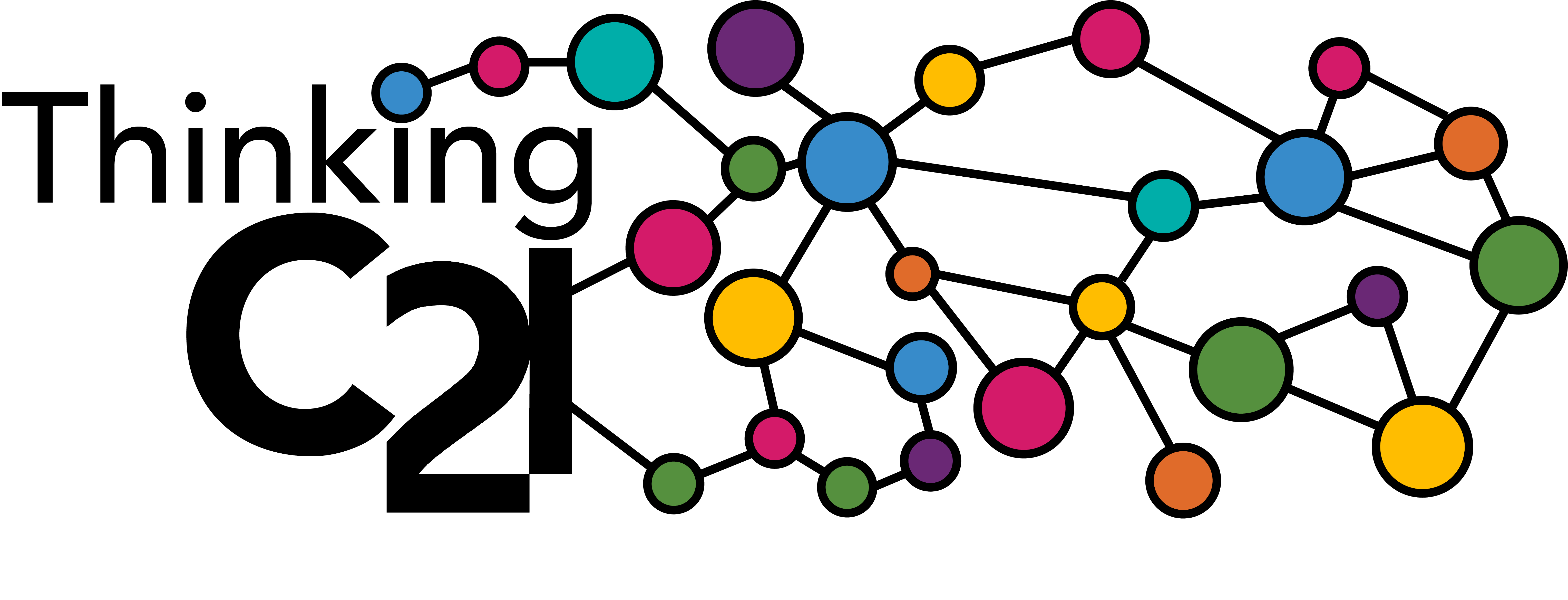By Richard Grusin
Richard Grusin is Director of the Center for 21st Century Studies, University of Wisconsin-Milwaukee and author of Premediation: Affect and Mediality After 9/11. This essay was originally published on Fata Morgana Web in English and Italian.

I am writing this short piece during Passover 2020, shortly after Bernie Sanders ended his campaign for the Democratic presidential nomination. The most successful Jewish candidate for president in the history of the United States, Sanders ended his campaign to lead the American people to the promised land of Democratic Socialism. The end of Sanders’ campaign also ended the hopes and dreams of his movement for a revolution that would transform US society through his election as president in 2020.
But for many activists, most of whom participated in the grass-roots movement around the Sanders presidential campaign, the COVID-19 pandemic offers new glimmers of hope for the destruction of capitalism and its replacement with a social and economic system that is just and egalitarian for humans and nonhumans alike. For such revolutionary thinkers the current pandemic lays bare the unsustainability and inequities of the current system. Rather than strive to return to the “normal” state of affairs prior to the pandemic, why not take advantage of this destruction to bring forth a new, more humane political economy and social welfare state. Why not, to paraphrase Steve Earle, start the revolution now?
While I am sympathetic with this desire, for now at least the chosen people remain in bondage to the forces of capitalism. The shining city on the hill is facing its own set of plagues, brought on by who knows what gods: the pharaoh Trump, Republicans, white supremacists, evangelical Christians, environmental devastation, structural racism, economic injustice, the end of the rule of law, cruel border closings, and now COVID-19. In response to the last of these plagues, the unequal and unpredictable killing of the first-infected, we have been called not to mark our lintels with blood, but to mark our faces with masks.
I have been thinking about what kind of work these masks are performing. Most obviously they work as expressions of socially distanced collectivity, not unlike the bloody lintels of the Egyptian Jews, which asked God to pass them over, to spare their first-born sons by keeping his distance from their homes. More specifically I have been trying to make sense of our pandemic maskings in relation to the question of popular resistance, rebellion, or revolution, wondering if our masks could be seen (or be made to function) as tokens of collective resistance not only to the virus but to the devastating forces of capitalism that have both enabled and been exacerbated by the current coronavirus pandemic.
Certainly recent history has presented us with any number of examples in which quotidian objects or ordinary things have become affiliated with political resistance movements, operating as radical mediations that catalyze or assemble revolutionary agency. In Ukraine’s “orange revolution” of 2004-05, orange ribbons metamorphosed into an orange revolutionary collectivity.

In Hong Kong’s umbrella revolution of 2014, yellow and other colored umbrellas helped to intensify and accentuate the crowds of protesters as well as generating an interesting sub-genre of revolutionary art.
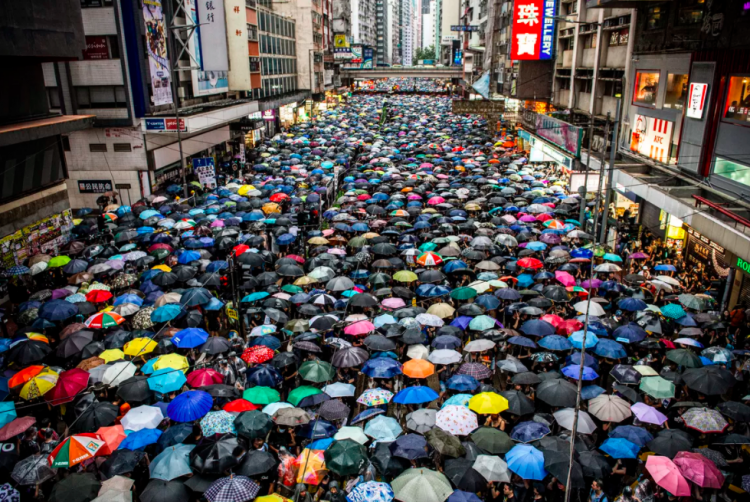
Beginning in 2018, France’s Gilet jaunes movement used high-visibility yellow vests to unify their causes under a series of specific populist demands for economic justice, including “lower fuel taxes, a reintroduction of the solidarity tax on wealth, a minimum-wage increase, the implementation of Citizens’ initiative referendums, among other things.”
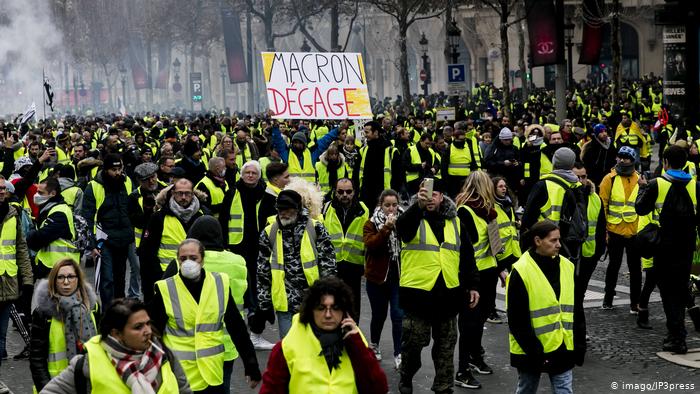
And more recently Italy’s Sardine movement took the symbol of the small schooling fish to bring together a grass-roots movement against the anti-immigrant, Eurosceptic politics of Matteo Salvini. Such nonhuman mediations have been and remain crucial in creating what Jonathan Flatley understands as “revolutionary counter-moods.”

While one might be tempted to think of these revolutionary objects as symbolic or metaphorical, representing or standing for a collective resistance that exists prior to and independent of these umbrellas or vest, I want to suggest that they operate more as metonymic mediations of these revolutionary movements by catalyzing and holding together revolutionary counter-moods. They do not signify in any explicit or literal sense the demands or character of these different movements; that is they do not operate primarily according to logical or metaphorical understanding. Rather these revolutionary objects are in some sense ontogenetic, functioning as radical mediations, a form of Peircean “thirdness” that he calls the “tendency to take habits.” In the case of these revolutionary movements, assembling in orange or with umbrellas or with yellow vests are part of the counter-moods or habits of collectivity and resistance necessary for any form of revolutionary movement.
Or to borrow from Davide Panagia’s Rancière’s Sentiments, these objects perform the act of radical mediation that Rancière characterizes as “le partage du sensible.” These revolutionary mediating objects help to generate a “conjunction of dispositional forces that relate things to one another,” such as the umbrellas or vests themselves, the movement’s revolutionary cause or aims, the people massing in the streets, or their multiple remediations in print, televisual, and networked media. These things or objects are not secondary epiphenomena of pre-existing collectivities but radical mediations that help to generate collectivities as qualitatively different from an additive collection of atomistic individuals. Revolutionary mediations of this kind help to create and hold together habits of collective assembly that themselves generate individual instances of resistance. The multiplication of objects also makes evident the multiplication of force in a revolutionary collective. Insofar as they stand for anything they function as an index of intensity or multiplicity or power not as a representation of a particular revolutionary concept or demand.
But can we say the same about masks? Do they function in the same way? This, I would venture, is a more complicated question because masks serve a double function. On the one hand wearing a mask as part of a revolutionary collective—like the Guy Fawkes masks in V for Vendetta or the joker masks in Joker—work to conceal the individual identity of the wearer.
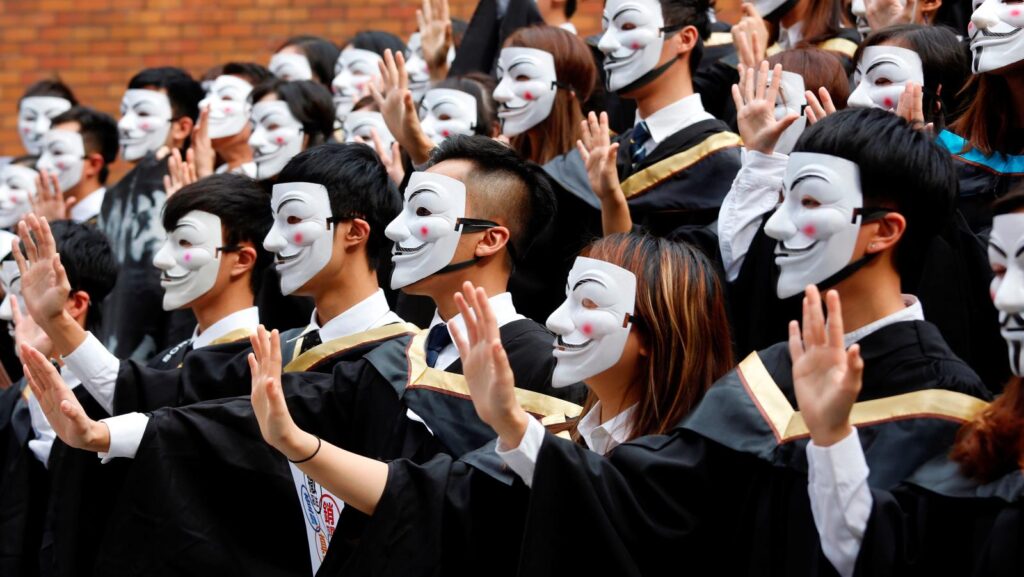

Like umbrellas or vests or sardines, however, these masks simultaneously generate a revolutionary collectivity, multiplying through repetition the intensity of revolutionary or resistant collectivity. Yet in these two cinematic instances the masks also have representational or symbolic value in reference to actual or fictional historical figures. But masks can also function to conceal without the historical reference, as the donning of masks in Hong Kong during the resistance from October 4-18, 2019 worked to thwart the facial recognition technologies used by police to identify and prosecute leaders of the protests.
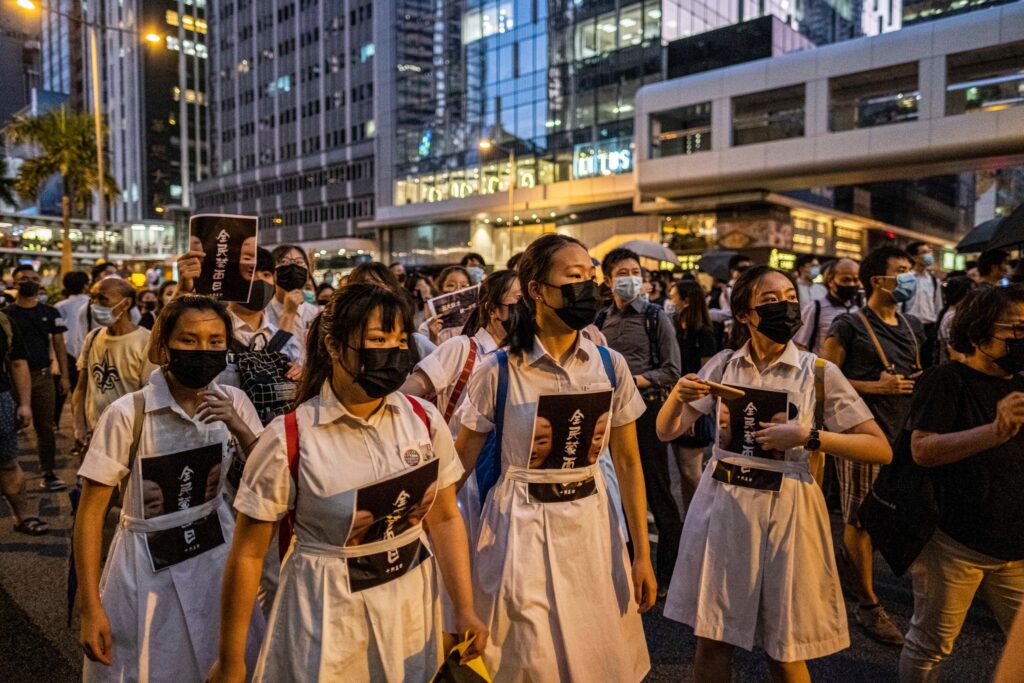
While all of these masks have historical or strategic aims, they also work to bring revolutionary collectivities and counter-moods into being through the redistribution of the sensible. What they demonstrate, I would argue, is how symbolic masks can work metonymically as well as metaphorically. These objects are not selected arbitrarily—they are not without meaning. Emergency vests, umbrellas, sardines, masks—their relation to the movements they innervate is one of contiguity not analogy, metonymy not metaphor. Or perhaps more precisely, these revolutionary objects are activated through the remediation of metaphor as metonymy.
Which brings me to the curious case of the COVID masks. On the one hand wearing these masks can be seen to enable a kind of socially distanced collectivity as we head out to the market or travel on the streets, sidewalks, buses, or trains in our cities. On the other hand the aim of these masks is to separate us from one another, to keep us apart not to bring us together in large numbers. But the masks can also create certain forms of solidarity and collectivity. People have begun to share online in large numbers instructions and examples for how to make your own masks and pictures of themselves and their family members masked and ready to venture out into the world.
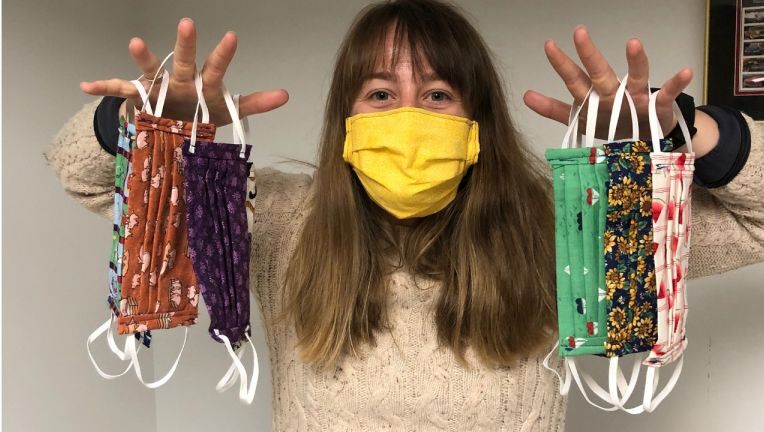
The act of COVID-19 masking can be seen as an act of collective care for one another aimed less at the health of any one particular individual but at the health of the collective. Or put differently COVID-19 masks constitute redistributions of the sensible by marking divisions between and among individuals.
And of course caring for others, caring for the collective itself, is a good reason for people to wear masks. But the question I have been asking myself is whether these masks of collective care can be transformed into masks of protest, vendetta, rebellion, resistance, revolution. Although the story is still unfolding, I have my doubts. For one, these masks work to transform individual citizens into patients. The most prominent reason to wear a mask is so that an asymptomatic person does not transmit the disease to others. The default assumption is that we should all behave as if we are infected with the virus, or as if we are potential patients. This seems especially true of those people wearing some versions of hospital masks, but the assumption holds no matter what your mask might look like. Wearing masks models care—both individually and collectively. And in times like these we need all the care we can get.
But “wearing a mask won’t protect us from our history.” Masking up for care perpetuates a logic of resilience, which concerns itself primarily with surviving (individually and collectively) the social, political, and economic conditions of the pandemic as they are. And perhaps for now that is all that these masks can do. But we cannot wait until the COVID-19 pandemic is over to work for structural change. Even now, as we act to protect ourselves and our neighbors from further infection, we need to urge people to mask up for change, not just for care. Care is important but not if it is predicated on acceptance of an unjust and inequitable status quo.
Many of us are feeling intense rage at the injustices laid bare and exacerbated by this pandemic. It is long past time for us to collectivize this rage and figure out how to make some real change–which must begin by destroying things that are valuable to those who perpetuate and benefit from this structural injustice. And as the examples of Ukraine, Hong Kong, France, and Italy all suggest, bringing about a revolutionary collective can be enabled by forms of radical mediation that can build on the “tendency to take habits.”
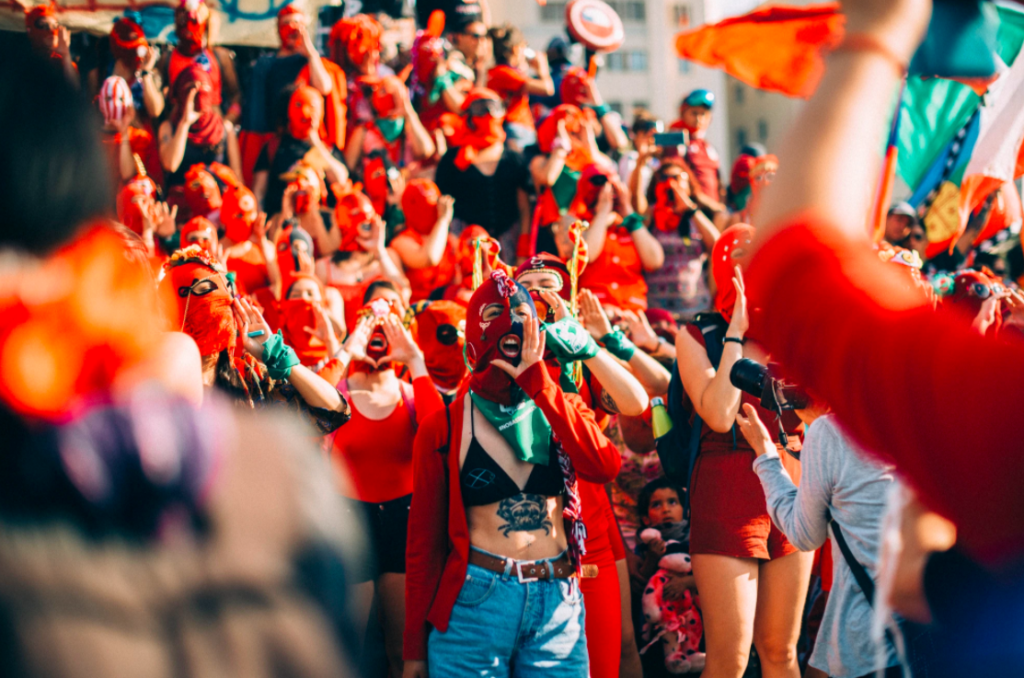
Perhaps the best recent example of this kind of revolutionary mediation can be found among the masked feminists of Chile, who have been a prominent force in the ongoing Chilean protests against social inequality that began in October 2019. In March 2020 masked feminists protested publicly in large numbers across Latin America Women’s Day marches. Most powerfully, on March 9, the day after the massive women’s day marches, Chile’s masked feminists inspired a general strike to protest ongoing injustices across the nation.
Insofar as our current masking for care is becoming habitual, this might be the perfect time here in the US and across the world, perhaps through looting or rioting in flash mobs or smaller collectivities, to begin working not only for the care of one another but towards the destruction and dispossession of those who impede such care, whether for the benefit of the poor, immigrants, the environment, or peoples of all colors, genders, and ethnicities. Our COVID masks have not brought us there yet, but they contain within them, I would suggest, the radical potentiality to mobilize collectivities of resistance or perhaps even revolution through the redistribution of capital and political power.
